When Samsung introduced their Galaxy S II flagship, one of the biggest enhancement over its predecessor was the inclusion of a Super AMOLED Plus display. The differentiating factor between the two was the move from a PenTile matrix display to a screen that featured true RGB pixels, providing a much smoother representation of color and increased clarity. However, with the announcement of their behemoth Samsung Galaxy Note and its 5.3-inch HD display, the Korean manufacturer has arguably taken a step back in terms of screen technology. While screen resolution is improved in the Note and the recently announced Samsung Galaxy S II HD thanks to the new Super AMOLED HD display, the absence of the “Plus” modifier indicates a regression back to PenTile technology.
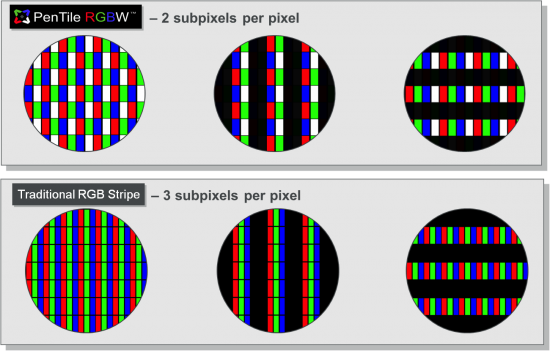
PenTile displays work by assigning only two colored subpixels to each pixel, rather than three RGB subpixels as found in the Galaxy S II and its Super AMOLED Plus screen. With a PenTile matrix screen, certain colors must be approximated by combining the subpixels of two adjacent pixels, creating colors that don’t read as true and images with sharply crosshatched edges under close examination. If that all seems confusing, the basic takeaway is that a PenTile screen effectively only displays images at half the advertised resolution.
PenTile displays recently deployed by Motorola have faced scrutiny for the above mentioned problems, but initial reviews of the Galaxy Note don’t seem to attribute the same issues to the oversized handset’s display. Perhaps this is due to the increased HD resolution masking some of the issues normally associated with screens deploying PenTile matrix technology. For better or worse, it would seem this same display will find its way to the Samsung Galaxy Nexus. Perhaps we will simply have to wait for the Samsung Galaxy S III for a proper Super AMOLED HD Plus display.
[via thegadgetlife | Thanks, Abir]

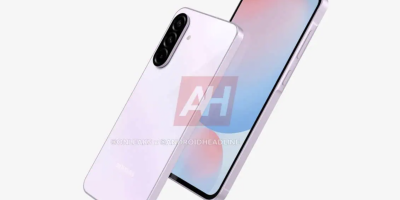
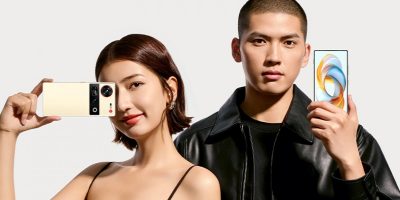
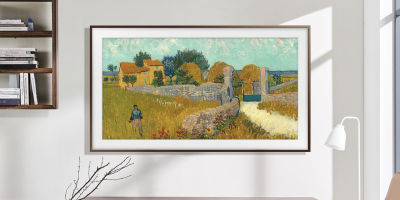
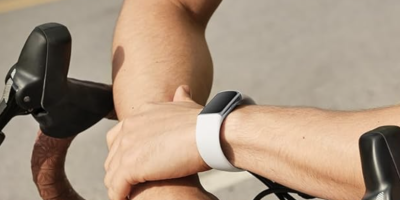
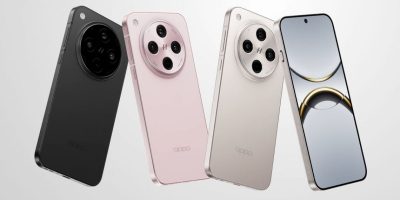
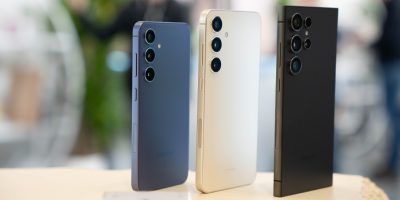

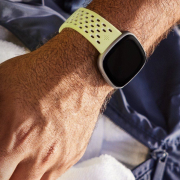

Boooooo!
I’m no fan of pentile, but I think we’ll all have to wait to see if it is an issue with a screen of this size and resolution. It still is to me with the Bionic.
The bionic is RGBW. The W doesn’t give any detail information, only brightness. That’s why it looks bad to more people. Samsung uses RGBG, which is nowhere near as bad Our eyes have the most resolution to green so the secong green subpixel adds a lot of data that the white of the Bionic cannot.
Actually if our eyes are more sensitive to green resolution, maybe our eyes also use some form of PenTile tech in the Retina, so now Samsung can sue apple for calling “Retina” display and not resembling our Retina as well as Samsung AMOLED PenTile displays :P
I just recently got a Bionic, and if I hold my phone about four inches from my face and squint a little I can see a difference. Beyond that though it looks as good as any of the other displays I’ve compared it to. At least IMHO.
If you aren’t holding it like that all the time you are holding it wrong.
you must look pretty dumb with your face buried in your phone constantly….
NOOOOOOOOOOOO
” the Galaxy Note don’t seem to attribute the same issues to the oversized handset’s display. Perhaps this is due to the increased HD resolution masking some of the issues normally associated with screens deploying PenTile matrix technology”
I never had a problem with the screen on my Vibrant and while they may be going back to PenTile, that quoted statement makes me believe that it WILL still be better than a Plus screen.
And then going from 5.3″ down to around 4.6″ means that PenTile should be NO problem.
My Vibrant PenTile Screen looks great since day one. You will only notice the pigmentation of the pixels if you really focus on the screen at a really close distance.
Your vibrant uses RGBG (which SAMOLED HD uses), which is vastly superior to the pentile most here are thinking of, namely motorola’s RGBW pentile. Phandroid posting an RGBW graph doesn’t help.
wow who really cares? Lol… Not trying to be mean
Some peole are really sensitive to pentile. They can see it, wheras others can’t. If you see it, it’s annoying. Most people can only really see RgBW, like the bionic. Phandroid failed to mention that samsung uses RGBG, which is significantly better image-wise.
That sucks.
I don’t think it’s accurate to say it effectively halves the resolution but can anybody provide mathematics to back that statement up?
Less detail, for sure, but 720p w/ Pentile > WVGA w/ RGB Stripe
Completely wrong
Way to back that up, dude.
So the screen has half of the sub pixel resolution.
1280X720X0,5 = 460 800 sub pixels
800X600 = 480 000 sub pixels.
Now we are only talking about sub pixels. Give a screen of similar size, I am pretty sure the pixel density of the PenTile would make up for the “lesser” sub pixel arrangement and it would be hard to distinguish one from the other
I already don’t see much of a difference on my Nexus S when holding it a normal distance so the increased DPI should make it almost impossible to see the sub pixels even when holding it close.
Other arguments can be made about PenTile resolution. See below.
http://pentileblog.com/misinformation/displaymates-twitter-on-pentile-resolution/
“When Ray Soniera says that PenTile has half of the R, G, & B subpixels as an RGB stripe he is correct. What Dr. Soneira is doing is counting only the R, the G, and the B subpixels… ignoring the W… and ignoring subpixel rendering.
First, imagine that we had a purely monochromatic B&W panel. Do we say it has no resolution because it has no color? (Seriously?) In the PenTile case, each white subpixel would be half of the B&W resolution, and the combined RGB triplet would be the other half. So, it looks like a full resolution B&W display. This is good, because the human eye can see tremendous detail in black & white… But not so well in color!
The human vision system can only see a very low resolution in pure color. In pure red to green color our eyes see only one tenth as well as it can in pure black & white. What we see in everyday life is a combination of pure color and pure black & white, so it seems very richly detailed.
So, having high resolution in black & white, but only half the resolution in pure color, is still more than we need. Why waste putting detail into color which we can’t see?
So, Dr. Soneira is right, we do have only half the number of RGB triplets… but that is a good thing.”
Your initial equation is wrong. It’s 1280x720x0.75 (8 subpixels vs 12). Besides, samsung uses RGBG pentile, and the second G still gives a lot of color information. Most of the detail our eyes see is n the green space, so RGBG is not bad. The OG SGS had it, and almost nobody noticed THey will be crammed in almost twice as tight here.
The reason for this difference is that article is talking about RgbW. Phandroid should have done a little research. Samsung uses GRGBG, which has much better information retention.
Ya, your math isn’t quite right. Should be:
SAMOLED HD=1280x720x2(subpixels per pixel) = 1,843,200 subpixels
vs.
Traditional 800×600 screen = 800x600x3(subpixels per pixel) = 1,440,000 subpixels
vs.
qHD LCD traditional = 960x540x3(subpixels per pixel) = 1,555,200 subpixels
Effectively, it cuts the number of subpixels down to 2/3 vs. traditional RGB, so a 2/3 effective resolution.
Umm, thanks to both of you I wiped that very quickly at work and it’s obviously wrong hehe
Also, the “half the subpixel” would apply to Nexus One display and not to the Samsung Display.
Would also explained why my Nexus S screen doesn’t bother me much compared to my Nexus One even with the lower dpi.
I’d say the technology update between the N1 and the NS screens made it look much more bearable.
Just to add to the maths/pixels/etc discussion, i think it would be more accurate to compare screens by their sub-pixels per inch (sPPI) rather than just looking at how many subpixels in a screen. I did a little test with that a while back.
my LG phone with a 320×480 3.2″ screen compared to the 800×480 3.7″ screen of the N1. Both ended up having a very close sPPI (i forgot how much and can’t be bothered to calculate it right now), and both looked quite similar in terms of clarity in a fully zoomed out web page with text.
I recall doing it with a few other stuff to compare each other, and the results were also interesting. the iphone 4’s screen was in the 600s, and the “retina” tablet screen from samsung was in the 500s, and the Droid/Milestone was around the 400s i think.
I’m pretty sure the N1 is RGBG as well. It may be the air gap between the screen and the glass that can cause some nasty artifacting. That’s the biggest step up in SAMOLED v AMOLED. There is no airgap.
Agreed, quite possible, also you can see the digitizer on the N1 so there was quite a few extra layers.
If you look at the original source link (disclosure: I wrote it) you’ll get your answers. I am afraid the summary posted here isn’t very accurate.
You effectively get half the resolution for sharp colour transitions.
And the point is that 720p w/ pentile is basically the same screen as RGB stripe WVGA, reconfigured to be able to claim a 720p resolution, and reconfiguring it to pentile may actually degrade quality.
I discuss all this in the original link.
Apple will definitely use PenTile as an argument that the iPhone 5’s screen is better.
does anyone know what type of screen technology Apple uses in the eyephone 4 display? I know its retina and magical and blah blah but what is it?
IPS
Thanks JJrudey.
found this video of IPS and super AMOLED.
http://www.youtube.com/watch?v=dA9oTNhSRaw
But if I remember correctly, they were after Samsung’s AMOLED displays but Samsung said “no”. So they settled for IPS. That’s when Apple started the “OMG look our display is so freaking awesome bbqsauce!!!!”
I’m sure they would have hyped up AMOLED displays just the same, even if they were pentile. If they would have been allowed to use them, they probably would have called it something like “Sunshine Display”. I frankly love the AMOLED display in my DInc. Pentile or not, I don’t want to go back to anything else.
And to all those hatin’ on Pentile, more pixels packed into a 4.whatever” screen will actually look better than a “480×800” pentile screen stretched to over 4.whatever inches.
Apple use the best display period. I want to see a 4.3 apple device with retina
A 4.3″ apple device cannot have retina, unless they use a 1920×1280 screen. They don’t allow any new resolutions but doubled ones. The max screen size they can go with their “300ppi+” retina requirement is 3.7″.
That’s why it looks so nice because they don’t make it bigger.
So why are you asking for a bigger screen? See, a 720p screen will be “retina” at 4.7″. Apple just got themselves in a corner with their “pixel doubing” scheme. If they went to 1280*960, they’d be golden at any screensize they want. They just can’t with the current methods. Unless they drop pixel doubling, 3.7 is as high as apple can go. Android and WP7 can goto 720p or even 1024×600 on a phone and be retina at any realistic phone size.
I was just curious to know why they go higher in screen size. I like samsung’s but when i played with gs2 and took a portrait pic, it looked so saturated. Any thoughts!
AnGeLFaCe77, its all about how they calibrate it at the factory. Unlike laptops and desktops, calibration is not user adjustable. I think CM7 tries to tidbit with some tools they added.
No they won’t. Apple doesnt even want to admit the hardware exists. Apple fanboys might.
One step forward, two steps back.
Do whatever you want, Samsung. Just keep PenTile away from my Prime!!!
it’s a loss of 1/3rd of the sub pixel, so a loss of 33% of sub pixel, but honestly at that PPI, I doubt it will be a noticeable difference. Granted not super happy + about this but still super happy
If the difference is not seen in the Galaxy Note, then everyone should probably wait to see the tech in hand before considering it a step back.
This. Everyone loved the note display, ans the sgs2hd has an even higher pixel density, making it even less noticeable. RGBW is the bad bad pentile. RGBG is alright. That’s what Samsung uses.
i was about to trade in my bionic because of the pentile screen and hold out for the nexus 720p hd. since the samsung displays were all the rage i could only imagine how aesthetically orgasmic this huge hd nexus screen would be. rather disappointing it’s a slight step back, but makes me more content to keep the bionic. thank you for this article!
The Bionic uses RGBW. The white subpixel doesn’t give much in the way of information, mainly brightness. Samsung uses RGBG, which is far better. Our eyes see the most detail in the Green spectrum. The second green subpixel adds a lot of information that the white cannot. It also drastically increases color space. Both defeat the hatching on the Bionic
you mean samsung’s pentile is different than moto’s and superior after all?
Yes, in most areas. Moto’s white pixels let it be brighter with less battery use.
my only complaint is the faint sight of black lines criss-crossing the whole screen, my photo galleries look like poo. even on my droid x they look better.
RGBG makes that go away in almost any situation, and 300+ppi will pretty much eliminate it entirely. We’ll have to wait and see for ourselves, but the chances of you noticing on the SAMOLED HD displays are far lower than on Moto Pentiles.
Thanks mate. You’ve been very informative.
http://nooooooooooooooo.com/
I think is needed!
We need to find the salesman for Pentile, I dont know who this guy is but I want him DEAD! DEAD YOU HEAR ME!
Take Pentile out by the source
One massive problem with this article? It talks about rgbw, which is hugely different from the rgbg that Samsung uses. That’s why moto pentile displays get much more hate than Samsung pentile.
In my opinion I would rather have the brightness than the saturation or detail. I rarely watch video on my phone yet I do look at it a lot outside. The pentile does not provide the sharpness or saturation that a similar resolution RGB screen has but if it makes up for it with brightness (and in correlation better battery life as you don’t have to have the brightness cranked up) it’s worth it to me. I have a droid 3 with a pentile screen
I’ve got the “regular” amoled screen on my desire, and guess what. It looks totally fine for me.
Yea, I can see some colors on a white screen if i look really close.
but having a pentile screen at a dpi of 300+ isn’t even worth considering a con.
Cant wait for all the Samsung Note screen SUCKS threads, posts.
Lets see if Samsung gets as much hate over Pentile as Motorola did. , even tho Samsung was using Pentile waaay before Motorola…
Basically, I’m trying to call out the Motorola haters…lol.
Is stripe better? Yes. Is pentile going to matter at 1280×720 on a 4.65″ nexus prime? Only to people who simply HAVE to find something to complain about. And they will be delusional.
Haters gonna hate.
As ericl5112 said, Samsung uses RGBG Pentile, NOT RGBW (which i suppose Motorola etc. uses). It’s still worse than real-stripe RGB, but it’s not ****ty like some phones and I think 720p is definitely worth it. Phandroid, why u no give proper info? :p
Rather have the great colors and sharpness of a calibrated IPS display instead of the high contrast and over saturated colors of a super amoled one. As an owner of an SGS2, I must say that I still envy the display of the iPhone 4. If only they made bigger iPhones..
What?!?! Super Amoled’s offer better viewing angles at lower battery use with higher levels over contrast and truer color yield than any LCD to date. That’s just verified fact. And I’ll just come right out and say it. If you want to pay more for a so-called Retina display because of the higher pixel count that people with 20/15 vision can’t see more than a foot away…then you’re paying more for a gimmick.
See below. Better battery life, better color rendering. Crisp, clear images at normal viewing distance. Sure, the higher pixel count means something on paper, but not in use.
http://blog.gsmarena.com/super-amoled-vs-retina-%E2%80%93-galaxy-s-and-iphone-4-displays-side-by-side-and-head-to-head/
Contrary to what screen manufacturers want you to believe, stronger colors do NOT make things appear more “lifelike” or “natural”.
take a look at this: http://www.displaymate.com/Gamut_1.html
Pictures of people on a S/AMOLED screen always ends up having their skins too yellow/orange/pink, whereas on a proper LCD (such as on the Droid/milestone), people in pictures retain their proper skin colors.
Though, admittedly, that contrast ratio of OLED screens is always so lovely.
I will say that the color scaling isn’t absolutely perfect, but it’s pretty darn good. One quick note…the Red and Blue line was pretty close to the standard gamut on the SGS. It trended more heavily away in the green, but that’s due to the two greens in the format of Samsung’s Pentile. Also, note that the iPhones are far and away worse. They’re close on the Green, but come up short on Red and woefully inadequate on the Blue spectrum. I’d love to see what the SGSII, with it’s traditional RGB setup does. If it’s (as I suspect) really close to the Standard, the improved contrast ratios and brightness of the Amoled Plus display make it the crown champ.
My point? Overall, every single person I’ve showed my Vibrant to has loved the rich colors. Videos pop on the screen in a way that no Apple mobile product has yet duplicated. It’s like a 4″ plasma in my pocket…
I’ve seen a SGS2 in person. The colors feel a more tame than the oversaturated ones on the NS or N1, but i compared it to what I had in memory, and didn’t do an actual comparison.
Yes, people like strong colors. And some don’t.
I was just pointing out that the “truer color yield than any LCD to date” you claimed is factually incorrect.
Fine by me. The display on my Nexus One doesn’t bother me, and I’ve long lusted over the Galaxy S displays.
Keep in mind that it also means better battery life for your device. At that res, it might matter.
If this looks as bad as the Bionic, I won’t buy it and HTC’s Vigor/Rezound/whatever is going to get my money instead…
Maybe the stripped RGB will be good if on smaller resolution, just I thought. And because it is more likely the same with the true Matrix coding, does the web icons or toolbar icons are affected by this resolution and having a matrix?
super amoled or sa+ look the same to me
I guess honest-to-God HD screens at that size are just not economical for most OEMs just yet.
LCD screens that are 720p probably won’t be pentile except from motorola. It’s just SAMOLED screens. I really don’t know what everyone is excited about. Samsung said the same thing weeks ago. Their technology doesn’t let them make SAMOLED+ HD screens yet at that size, but they can make SAMOLED HD screens at as low as 4.65″
I’m not techy enough to understand half of the heady technology here, but I’m sure it’ll be fine. Stop your whining and stop your nit picking. There’s no way a flagship device of this caliber and importance will have an undesirable screen – PenTile or not.
The traditional RGB Stripped is darker and better. Truly matrix looks alike. Remove Pentile at Samsung and return it back again. Once I play on my phone with Pentile, it sometimes affects the colours and even the toolbar icons.
Traditional RGB Stripe is more likely a true Matrix. Making it to pentile would surely decline it’s visualization. I think iPhones Development is better than Samsung, and some Samsung design are just copied to Apple.
Seems that Traditional RGB Stripe is better than Pentile to be in Galaxy S II Flagship, with its 5.3 display screen the megapixel should be also higher than 8MP for its best image resolution, then I can easily use my icons for windows.